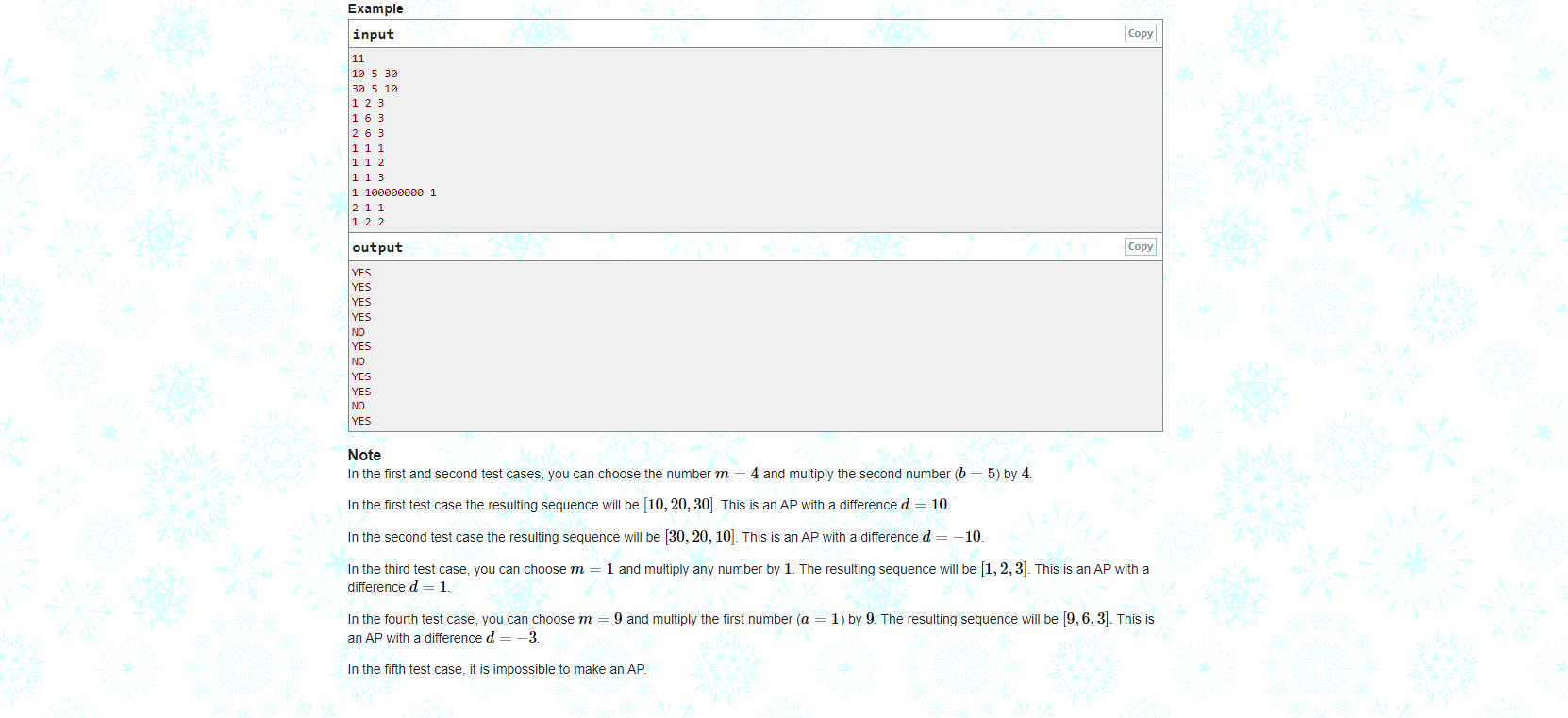Question
Solve it using c++ do not use comment answer simply time limit per test2 seconds memory limit per test256 megabytes inputstandard input outputstandard output Polycarp
Solve it using c++
do not use comment
answer simply
time limit per test2 seconds memory limit per test256 megabytes inputstandard input outputstandard output Polycarp has 3 positive integers a, b and c. He can perform the following operation exactly once.
Choose a positive integer m and multiply exactly one of the integers a, b or c by m. Can Polycarp make it so that after performing the operation, the sequence of three numbers a, b, c (in this order) forms an arithmetic progression? Note that you cannot change the order of a, b and c.
Formally, a sequence x1,x2,,xn is called an arithmetic progression (AP) if there exists a number d (called "common difference") such that xi+1=xi+d for all i from 1 to n1. In this problem, n=3.
For example, the following sequences are AP: [5,10,15], [3,2,1], [1,1,1], and [13,10,7]. The following sequences are not AP: [1,2,4], [0,1,0] and [1,3,2].
You need to answer t independent test cases.
Input The first line contains the number t (1t104) the number of test cases.
Each of the following t lines contains 3 integers a, b, c (1a,b,c108).
Output For each test case print "YES" (without quotes) if Polycarp can choose a positive integer m and multiply exactly one of the integers a, b or c by m to make [a,b,c] be an arithmetic progression. Print "NO" (without quotes) otherwise.
You can print YES and NO in any (upper or lower) case (for example, the strings yEs, yes, Yes and YES will be recognized as a positive answer).
Example input Copy 11 10 5 30 30 5 10 1 2 3 1 63 2 6 3 1 1 1 1 2 1 3 1 100000000 1 2 1 1 1 2 2 output Copy YES YES YES YES NO YES NO YES YES NO YES Note In the first and second test cases, you can choose the number m = 4 and multiply the second number (b = 5) by 4. In the first test case the resulting sequence will be [10, 20, 30). This is an AP with a difference d = 10. In the second test case the resulting sequence will be [30, 20, 10). This is an AP with a difference d= -10. In the third test case, you can choose m= 1 and multiply any number by 1. The resulting sequence will be [1,2,3]. This is an AP with a difference d = 1. In the fourth test case, you can choose m = 9 and multiply the first number (a = 1) by 9. The resulting sequence will be [9, 6,3]. This is an AP with a difference d = -3. In the fifth test case, it is impossible to make an AP
Step by Step Solution
There are 3 Steps involved in it
Step: 1

Get Instant Access to Expert-Tailored Solutions
See step-by-step solutions with expert insights and AI powered tools for academic success
Step: 2

Step: 3

Ace Your Homework with AI
Get the answers you need in no time with our AI-driven, step-by-step assistance
Get Started


